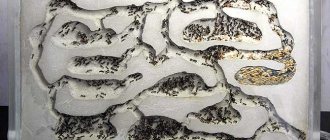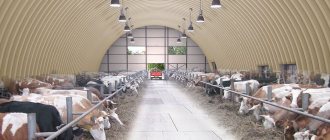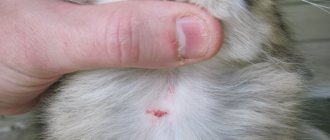Pierre de Fermat is one of the greatest scientists in French history. His achievements include the creation of such works as the theory of probability and numbers; he is the author of outstanding theorems and the discoverer of a number of mathematical properties. From a very young age, his parents paid great attention to their son’s education and, most likely, this is what influenced the development of his grandiose mind. Always calm and active, inquisitive and strict, seeking and finding - all this is Pierre Fermat. A short biography will help the reader to gather for himself all the most interesting things about this colossal personality of a mathematician.
Early stages
Pierre was born in France. He is one of the discoverers and creators of number theory, as well as analytical geometry.
For a long time it was said that Pierre Fermat was born in 1595 in Toulouse, but by the middle of the nineteenth century in the city of Beaumont, a record was discovered in the archives in which it was said that in the summer of 1601, a son was born to the city councilor Dominique Fermat and his wife Pierre. It is known that Dominic Fermat was a very respected man in the city. He was a leather merchant. Pierre spent his childhood close to his parents, and when the time came to get an education, he went to Toulouse, the closest city with universities. A well-studied law on the university bench gave Pierre the opportunity to work as a lawyer, but the young man decided to go into service with the state. In 1631, Pierre was enlisted as a councilor of the cash desks in the parliament of Toulouse. At this time, Fermat was already married to the daughter of a councilor of the parliament in which he worked. His life was very quiet and calm. But thanks to him, today people studying mathematics can gain a lot of interesting information that is truly priceless. Even in the school curriculum, attention is actively paid to the topic “Pierre Fermat and his discoveries.”
Is there any reason?
Many may doubt the prospects of this type of business. According to Boris Akimov, founder of the LavkaLavka cooperative, their company also tried to implement a vertical beds project in the city. But the production capacity turned out to be too small (30 beds for growing tomatoes) to generate income from them.
There is also the sad experience of the “I-Vegetable Garden” project, in which the founders rented a greenhouse in the Moscow region and installed webcams. They offered to rent part of the land plot and observe the cultivation of vegetable crops on it. As a result, the project failed.
As of 2010, society had not yet matured towards agritourism, so those who then tried to introduce this idea were rather negatively opposed to Telefarm. They do not believe in its success, believing that businessmen will not be able to attract a sufficient number of clients to receive a stable income.
But some existing urban farmers who already keep livestock on the Telefarm are making ambitious plans. So, Yuri Nechaev acquired a pig and 2 bulls. He does not plan to give them away for slaughter; he wants to cover the pig so that it produces litter. This will allow expanding the number of herds using an intensive method. He also expresses a desire to buy part of the land, build a sausage and dumpling shop on it, and organize his own full-fledged farm. For his potential partners, Mr. Nechaev is ready to build an airstrip (the village is located 520 km from Murom). He calculated that he needed fairly small investments (about 2-3 million rubles).
Passion for history
In his youth, the future mathematician was famous as a keen expert on history (especially antiquity); his help was sought when publishing the classics of Greece. He left comments on the works of Sinezug, Athenaeus, Polyunus, Frontinus, Theon of Smyrna, and made corrections to the texts of Sextus Empiricus. Many believe that he could easily have left his mark as a prominent Greek philologist.
However, thanks to the fact that he chose a different path, his grandiose research saw the light of day. And that's why most people know that Pierre Fermat is a mathematician.
During his lifetime, his work became known mainly through the extensive correspondence that Fermat conducted with other scientists. The collection of essays that he tried to compile more than once was never brought to life. As a matter of fact, this is a logical outcome given such a busy workload at the main job in court. During Pierre's lifetime, not a single one of his many works was published.
Scientific activity
When Pierre was 35 years old, he wrote a treatise “Introduction to the Theory of Planar and Spatial Places,” where he outlined in detail his vision of analytical geometry.
Fermat's Last Theorem
The following year, the scientist formulated his famous “Great Theorem.” After 3 years, he also formulated Fermat’s Little Theorem.
Fermat corresponded with the most famous mathematicians, including Mersenne and Pascal, with whom he discussed the theory of probability.
In 1637, the famous confrontation between Pierre and René Descartes broke out. The first harshly criticized Cartes' Dioptrics, and the second gave a devastating review of Fermat's works on analysis.
Soon Pierre was quick to give two correct solutions – one according to Fermat’s article, and the other based on the ideas of Descartes’ “Geometry”. As a result, it became obvious that Pierre’s method turned out to be much simpler.
Descartes later asked for forgiveness from his opponent, but until his death he was biased towards him.
An interesting fact is that the discoveries of the French genius have survived to this day thanks to a collection of his large correspondence with colleagues. His only work at that time published in printed form was “Treatise on Straightening”.
Pierre Fermat, before Newton, was able to use differential methods to draw tangents and calculate areas. And although he did not systematize his methods, Newton himself did not deny that it was Fermat’s ideas that pushed him to develop analysis.
The main merit in the scientist’s scientific biography is considered to be the creation of number theory.
Fermat was extremely passionate about arithmetic problems, which he often discussed with other mathematicians. In particular, he was interested in problems about magic squares and cubes, as well as tasks related to the patterns of natural numbers.
Later, Pierre developed a method for systematically finding all divisors of a number and formulated a theorem on the possibility of representing an arbitrary number by a sum of no more than 4 squares.
It is curious that many of the original methods of solving problems and levels used by Fermat still remain unknown. That is, the scientist simply did not leave any information about how he solved this or that task.
There is a famous case when Mersenne asked a Frenchman to find out whether the number 100,895,598,169 was prime. He almost immediately reported that this number was equal to 898423 multiplied by 112303, but did not tell how he came to this conclusion.
Fermat's outstanding achievements in the field of arithmetic were ahead of their time and were forgotten for 70 years, until Euler, who published the systematic theory of numbers, became interested in them.
Pierre's discoveries were undoubtedly of great significance. He developed a general law for the differentiation of fractional powers, formulated a method for drawing tangents to an arbitrary algebraic curve, and also described the principle of solving the complex problem of finding the length of an arbitrary curve.
Fermat went further than Descartes when he wanted to apply analytical geometry to space. He managed to formulate the foundations of probability theory.
Pierre Fermat was fluent in 6 languages: French, Latin, Occitan, Greek, Italian and Spanish.
Pierre Fermat: discoveries in mathematics
One of Pierre Fermat's first works in the field of mathematics was the restoration of two lost books of Apollonius entitled “On Flat Places.” Most see Pierre's colossal service to science in his introduction of infinitesimal quantities into analytical geometry. He took this extremely important step in 1629. Also in the late twenties, Pierre Fermat found ways to find tangents and extrema. And already in 1636, a completely completed description of the discovery method was handed over to Mersenne, and anyone could familiarize themselves with this work.
Scientific activity
When Pierre was 35 years old, he wrote a treatise “Introduction to the Theory of Planar and Spatial Places,” where he outlined in detail his vision of analytical geometry.
Fermat's Last Theorem
The following year, the scientist formulated his famous “Great Theorem.” After 3 years, he also formulated Fermat’s Little Theorem.
Fermat corresponded with the most famous mathematicians, including Mersenne and Pascal, with whom he discussed the theory of probability.
In 1637, the famous confrontation between Pierre and René Descartes broke out. The first harshly criticized Cartes' Dioptrics, and the second gave a devastating review of Fermat's works on analysis.
Soon Pierre was quick to give two correct solutions – one according to Fermat’s article, and the other based on the ideas of Descartes’ “Geometry”. As a result, it became obvious that Pierre’s method turned out to be much simpler.
Descartes later asked for forgiveness from his opponent, but until his death he was biased towards him.
An interesting fact is that the discoveries of the French genius have survived to this day thanks to a collection of his large correspondence with colleagues. His only work at that time published in printed form was “Treatise on Straightening”.
Pierre Fermat, before Newton, was able to use differential methods to draw tangents and calculate areas. And although he did not systematize his methods, Newton himself did not deny that it was Fermat’s ideas that pushed him to develop analysis.
The main merit in the scientist’s scientific biography is considered to be the creation of number theory.
Fermat was extremely passionate about arithmetic problems, which he often discussed with other mathematicians. In particular, he was interested in problems about magic squares and cubes, as well as tasks related to the patterns of natural numbers.
Later, Pierre developed a method for systematically finding all divisors of a number and formulated a theorem on the possibility of representing an arbitrary number by a sum of no more than 4 squares.
It is curious that many of the original methods of solving problems and levels used by Fermat still remain unknown. That is, the scientist simply did not leave any information about how he solved this or that task.
There is a famous case when Mersenne asked a Frenchman to find out whether the number 100,895,598,169 was prime. He almost immediately reported that this number was equal to 898423 multiplied by 112303, but did not tell how he came to this conclusion.
Fermat's outstanding achievements in the field of arithmetic were ahead of their time and were forgotten for 70 years, until Euler, who published the systematic theory of numbers, became interested in them.
Pierre's discoveries were undoubtedly of great significance. He developed a general law for the differentiation of fractional powers, formulated a method for drawing tangents to an arbitrary algebraic curve, and also described the principle of solving the complex problem of finding the length of an arbitrary curve.
Fermat went further than Descartes when he wanted to apply analytical geometry to space. He managed to formulate the foundations of probability theory.
Pierre Fermat was fluent in 6 languages: French, Latin, Occitan, Greek, Italian and Spanish.
Controversy with Descartes
In 1637-38, the French mathematician Pierre Fermat vigorously debated with the no less outstanding mathematician Rene Descartes. Controversy arose around the “Method of finding minimums and maximums.” Descartes did not fully understand the method and did not understand it, for this reason he subjected it to unfair criticism. In the summer of 1638, Pierre Fermat sent Mersenne an updated and more detailed presentation of his method to pass on to Descartes. His letter reflects his reserved nature because it is written in an extremely dry and calm manner, but at the same time there is a certain amount of irony in it. His letter even contains a direct mockery of Descartes' misunderstanding. Fermat never once entered into senseless and intemperate polemics; he always maintained an even and cold tone. It was not an argument, but rather, the conversation was similar to a teacher communicating with a student who did not understand something.
Working method
An erudite man steeped in classical Greco-Roman culture, he was an encyclopedist in the breadth of his origins. He made notes in the margins of books he read with observations and sketches of evidence. He was not a professional mathematician and did not write books. He was interested in the human knowledge of his time. He sends letters about his discoveries or concerns, he had Father Mersenne as a mentor and disseminator, and instead of formalizing his discoveries or inventions, he may have devoted himself to reflection and given flight to his boundless imagination; He presented challenges through problems for which he had a solution. He argued with Descartes about the case of La Dioptrique
, the work of this. Given Descartes' discomfort, Fermat sent a test, making it clear that truth was more important to him than fame or envy. [10 ]
Curve straightening problem
He was one of the very first to study the problem of calculating the lengths of arcs of curves. He managed to bring the solution to the problem to find some areas. All curve problems were reduced to calculating area. There was only one drop left to introduce a new and more abstract concept of “integral”.
Subsequently, the entire positive outcome of methods for determining “areas” was in the search for a relationship with the “method of extrema and tangents.” There is evidence that Fermat already saw a clear connection, but none of his works reflect this point of view.
Unlike most of his colleagues in the case, Pierre de Fermat was a pure mathematician and never tried to explore other branches of science. It is probably for this reason that his powerful contribution to all of mathematics is so deep and great.
math4school.ru
1601–1665
I have established many extremely beautiful theorems.
Pierre de Fermat
Although Fermat failed to give a systematic exposition of the theory of numbers, nevertheless, we owe the modern development of this science and the internal coherence inherent in it to a large extent to his discoveries and the desires they caused to prove their validity.
Hieronymus Georg Zeiten
Pierre de Fermat (August 17, 1601 – January 12, 1665) was a famous French mathematician. Fermat, a lawyer by training, is known to the general public primarily for his Great Theorem, which bears his name. However, Fermat was not only concerned with his most beloved number theory. But also the mathematical problems that were in the center of attention of scientists of the 17th century, namely, the problems of determining maxima and minima, finding tangents, calculating areas, centers of gravity, lengths of arcs of curves, in short, those questions that we now attribute to mathematical analysis or differential and integral calculus. And here Fermat owns the most important results preceding the creation of differential and integral calculus by Newton and Leibniz. In addition, Fermat was the first to come up with the idea of coordinates and create analytical geometry. He also worked on problems in probability theory.
Pierre Fermat was born in the town of Beaumont-de-Lomagne (France). His father, Dominique Fermat, was a wealthy merchant, the second city consul, i.e. something like the mayor's assistant. In addition to Pierre, the family had one more son and two daughters.
Little Pierre studied in his hometown with the Franciscans, and went to Toulouse, the nearest university city, to complete his education. Unfortunately, nothing is known about Pierre Fermat’s university years, just as his teachers are unknown. One can only assume that his training was thorough: his knowledge of the main European languages and literatures was extensive and deep; Greek and Latin philology owe him some important corrections; his knowledge amazed his contemporaries with its breadth and versatility. He wrote poetry in his native, Latin, and Spanish languages with equal ease.
Fermat received a legal education - first in Toulouse, and then in Bordeaux and Orleans. One must think that the choice of faculty was not accidental. His mother, Claire de Long, was from a family of lawyers, so Fermat was involved in the judicial environment from childhood. After graduating from university, he took up the legal profession, with great success.
However, from the very first years of independent activity, he could not limit his range of interests to his profession. Work on ancient authors and an ever-increasing interest in mathematics occupied all his free time. The results of this were immediate.
Already in 1629, Fermat coped with a unique and difficult task. He had at his disposal a Latin translation of Pappus's mathematical works. These works contained a brief retelling of Apollonius' proposals. Fermat set out to restore the course of reasoning of the famous author and fulfilled his intention.
One of Fermat’s major discoveries, the method of finding maxima and minima, dates back to 1629.
Fermat's law practice was successful, but he decided to switch to public service. By an act of May 14, 1631, Fermat was assigned to the position of official (adviser for receiving complaints) of the Cassation Chamber of the Toulouse Parliament. At that time, district judicial bodies were called parliaments in France. Here Fermat served until the end of his life, rising to the rank of adviser to the investigative chamber and having a reputation as a deep expert in law and an incorruptibly honest lawyer.
In the same year, Fermat married his distant relative on his mother’s side, Louise de Long. Pierre and Louise had five children, of whom the eldest, Samuel, became a poet and scientist.
Rapid career growth allowed Fermat to become a member of the Chamber of Edicts in the city of Castres (1648). It is to this position that he owes the addition of a sign of nobility to his name - the particle de; from that time on he becomes Pierre de Fermat.
During Fermat's lifetime, his mathematical work became known mainly through the extensive correspondence he maintained with other scientists. The collected works, which he repeatedly tried to write, were never created by him. Yes, this is not surprising given the intense work in court that he had to do. None of his writings were published during his lifetime. However, he gave several treatises a completely finished form, and they became known in manuscript to most of the scientists of his time. In addition to these treatises, there remains his extensive and extremely interesting correspondence.
In the 17th century, when there were no special scientific journals, correspondence between scientists played a special role. It posed problems, reported on methods for solving them, and discussed pressing scientific issues.
Fermat's correspondents were the greatest scientists of his time: Descartes, Etienne and Blaise Pascali, Huygens, Torricelli, Wallis. Letters were sent either directly to the correspondent or to the Abbé Mersenne (Descartes' college classmate) in Paris; the latter multiplied them and sent them to those mathematicians who were working on similar issues.
Fermat's great service to science is usually seen in his introduction of infinitesimal quantities. Fermat, using almost modern rules, found tangents to algebraic curves. It was these works that prompted Newton to create analysis. In textbooks on mathematical analysis you can find the important Fermat lemma, or a necessary sign of an extremum: at extremum points, the derivative of a function is equal to zero.
Fermat formulated the general law of differentiation of fractional powers and extended the formula for integrating powers to the cases of fractional and negative exponents.
Before Fermat, systematic methods for calculating areas were developed by the Italian scientist Cavalieri. But already in 1642, Fermat discovered a method for calculating areas limited by any “parabolas” and any “hyperbolas”. They were shown that the area of an unlimited figure can be finite.
Fermat was one of the first to tackle the problem of straightening curves, i.e. by calculating the length of their arcs. He managed to reduce this problem to calculating some areas.
Thus, Fermat’s concept of “area” acquired a very abstract character. The determination of areas involved problems of straightening curves; he reduced the calculation of complex areas with the help of substitutions to the calculation of simpler areas. The only step left was to move from area to the even more abstract concept of “integral”.
Along with Descartes, Fermat is considered the founder of analytical geometry. In his work “Introduction to the Theory of Planar and Spatial Places,” which became famous in 1636, he was the first to classify curves depending on the order of their equation, establishing that a first-order equation defines a straight line, and a second-order equation defines a conic section. Developing these ideas, Fermat went further than Descartes and applied analytical geometry to space.
Independently of Pascal, Fermat developed the foundations of probability theory. It is from the correspondence between Fermat and Pascal in 1654, in which they, in particular, came to the concept of mathematical expectation and the theorems of addition and multiplication of probabilities, that this wonderful science begins its history. The results of Fermat and Pascal were given in Huygens's book On Calculations in Gambling (1657), the first manual on probability theory.
And yet, the main merit of Pierre Fermat is the creation of number theory. If in other works Fermat explored topics that were the focus of attention of many other mathematicians of his time - Kepler, Cavalieri, Torricelli, Blaise Pascal, Wallis - then in number theory he was a pioneer. None of his contemporaries and none of the mathematicians who lived after him, up to Euler, understood either the significance of the problems he raised or their internal connection. Fermat himself wrote:
Arithmetic has its own field, the theory of integers; this theory was only slightly touched upon by Euclid and was not sufficiently developed by his followers (unless it was contained in those books of Diophantus from which the ravages of time have deprived us); mathematicians must therefore develop or renew it.
Fermat was able to identify from the chaos of problems and particular questions that immediately arise before a researcher when studying the properties of integers, the main problems that became central to the entire classical theory of numbers. He is also responsible for the discovery of a powerful general method for proving number-theoretic propositions - the so-called method of indefinite or infinite descent.
Mathematicians of Ancient Greece, since the time of Pythagoras, collected and proved various statements relating to natural numbers. For example, methods for constructing all Pythagorean triples, a method for constructing perfect numbers, etc. Diophantus of Alexandria (3rd century AD) in his “Arithmetic” considered numerous problems about solving algebraic equations with several unknowns in rational numbers (nowadays equations that need to be solved in integers are called Diophantine). This book, although not completely, became known in Europe in the 16th century, and in 1621 it was published in France and became Fermat's reference book.
Fermat was constantly interested in arithmetic problems and exchanged complex problems with his contemporaries. For example, in his letter, called the “Second Challenge to Mathematicians” in February 1657, he proposed finding a general rule for solving Pell’s equation ax2 + 1 = y2 in integers. In the letter, he proposed finding solutions for a = 149, 109, 433. The complete solution to Fermat’s problem was found only in 1759 by Euler.
Fermat began with problems about magic squares and cubes, but gradually switched to the laws of natural numbers - arithmetic theorems. There is no doubt that Diophantus influenced Fermat, and it is symbolic that he writes down his amazing discoveries in the margins of Arithmetic.
Fermat discovered that if a is not divisible by a prime number p, then the number ap–1–1 is always divisible by p. This statement is called Fermat's little theorem. It is fundamental in all elementary number theory. Euler gave this theorem several different proofs. Euler later gave a proof and generalization of this important result.
In 1749, Euler proved another of Fermat's conjectures; Fermat himself rarely provided proof of his statements - prime numbers of the form 4k+1 (i.e. the numbers 5, 13, 17, 29...) are represented as a sum of squares, and in a unique way. This proposition is not at all easy to prove. None of his contemporaries managed to carry it out. The first proof was given only by Euler. This proof cost him 7 years of work; Fermat himself proved this theorem indirectly, using the inductive “method of infinite descent” he invented. This method was not published until 1879; However, Euler reconstructed the essence of the method based on several comments in Fermat’s letters and successfully applied it several times. Later, an improved version of the method was used by Poincaré and Andre Weil.
Fermat developed a method for systematically finding all divisors of a number and formulated a theorem on the possibility of representing an arbitrary number by a sum of no more than four squares (Lagrange’s theorem on the sum of four squares).
In the problem of the second book of his Arithmetic, Diophantus set the task of representing a given square as the sum of two rational squares. In the margin against this problem, Fermat wrote:
On the contrary, it is impossible to decompose either a cube into two cubes, or a biquadrate into two biquadrates, or in general into any power greater than a square into two powers with the same exponent. I have discovered a truly wonderful proof of this, but these fields are too narrow for it.
In other words:
For any natural number n>2 the equation
ap + bp = sp
has no natural solutions a, b and c.
This is Fermat's famous Last Theorem.
This theorem had an amazing fate. In the last century, her research led to the construction of the most subtle and beautiful theories related to the arithmetic of algebraic numbers. Without exaggeration, we can say that it played no less a role in the development of number theory than the problem of solving equations in radicals in algebra.
The simplicity of the formulation of this theorem and the mysterious words about its “miraculous proof” led to the wide popularity of the theorem among non-mathematicians and to the formation of an entire corporation of “Fermatists”, who, according to Davenport, “have courage far superior to their mathematical ability.” Therefore, the Great Theorem ranks first in terms of the number of incorrect proofs given to it.
Fermat himself published a proof of the special case for n=4, which adds to the doubt that he had a proof of the general case.
Euler in 1770 proved the theorem for the case n=3, Dirichlet and Legendre in 1825 - for n=5, Lame - for n=7. Kummer showed that the theorem is true for all prime n less than 100, with some possible exceptions.
Fermat's Last Theorem was finally proven in 1995 by Andrew Wiles. Wiles published the first version of his proof in 1993, after 7 years of hard work, but a serious gap was soon discovered in it, which, with the help of Richard Lawrence Taylor, was quickly eliminated. In 1995, the final version of the proof was published, which contains 129 pages and was published in the Annals of Mathematics.
Fermat was not limited to mathematics alone; he also studied physics, where he discovered the law of the propagation of light in media. Fermat proceeded from the assumption that light travels from some point in one medium to some point in another medium in the shortest possible time. Applying his method of maxima and minima, he found the path of light and established, in particular, the law of refraction of light. At the same time, Fermat expressed the following general principle:
Nature always takes the shortest routes,
which can be considered an anticipation of the Maupertuis–Euler principle of least action.
Fermat's life was poor in external events, but the traces he left in mathematics are such that interest in his personality does not wane. Fermat's legacy is inexhaustible in depth of content.
Contemporaries characterize Fermat as an honest, accurate, balanced and friendly person, brilliantly erudite in both mathematics and the humanities, an expert in many ancient and living languages, in which he wrote good poetry.
Around 1652, the scientist's life was in serious danger. Farm even had to deny reports of his death during the plague; he did become infected but survived.
Pierre de Fermat died on January 12, 1665 in the city of Castres, during a visiting session of the court. Initially, he was buried there, in Castres, but soon, in 1675, the ashes were transferred to the Fermat family tomb in the Augustinian church in Toulouse.
On February 9, 1665, the Journal of Scientists published an obituary for Pierre Fermat, which stated:
He was one of the most remarkable minds of our century, such a universal genius and so versatile that if all scientists had not paid tribute to his extraordinary merits, it would be difficult to believe all the things that need to be said about him, so as not to miss anything in our laudable word.
Fermat's son, Samuel, provided invaluable service to mathematics. In 1679 he published his father's works under the title "Various mathematical works of Dr. Pierre de Fermat, selected from his letters or written to him on mathematical questions and in physics by the most learned men in French, Latin or Italian." Unfortunately, Samuel Fermat left no memories of his father.
Named after the Farm:
- Lycée Pierre de Fermat in Toulouse
- Fermat Prize of the Mathematical Institute of Toulouse (established in 1989, the award amount is approximately 20,000 euros and is awarded every two years).
The following mathematical objects are named Ferm:
- Fermat's Last Theorem
- Fermat's Little Theorem
- spiral Truss
- Fermat's theorem on the condition of a local extremum of a function
- Fermat numbers
- farm points
- Fermat's theorem on polygonal numbers
- private Farm.
Based on materials from Wikipedia and books: D. Samin “100 Great Scientists” (Moscow, “Veche”, 2000) and “Wonderful Scientists” (edited by S.P. Kapitsa, Moscow, “Science”, 1980).
About number theory
Fermat's most important contribution to mathematics is still considered to be the creation of a completely new discipline - numerical theory. Throughout his career, the scientist was interested in arithmetic problems, which he sometimes invented and solved himself. In the process of finding answers to the questions posed in the problems, Fermat often discovered something completely new and unique. New algorithms and laws, theorems and properties - all this once formed the basis of number theory, which is known to every schoolchild today.
Other achievements
Independently of Pascal, Fermat developed the foundations of probability theory. It is from the correspondence between Fermat and Pascal (1654), in which they, in particular, came to the concept of mathematical expectation and the theorems of addition and multiplication of probabilities, that this wonderful science begins its history. The results of Fermat and Pascal were given in Huygens's book On Calculations in Gambling (1657), the first manual on probability theory.
Fermat's name goes to the basic principle of geometric optics, due to which light in an inhomogeneous medium chooses the path that takes the least time (however, Fermat believed that the speed of light is infinite, and formulated the principle more vaguely). With this thesis begins the history of the main law of physics - the principle of least action.
Fermat's theorem
Of course, what stands out most from Pierre’s works is his great and powerful theorem. It puzzled the greatest mathematicians for many years and even decades, and even after it was published in 1995, new and very diverse methods of proof are still being introduced into mathematical departments at many universities around the world.
Although Fermat left only brief summaries of his work and fragmentary information, it was his discoveries that gave impetus to many other outstanding mathematical geniuses. In his honor, one of the most prestigious and oldest lyceums in France was named - the Pierre Fermat Lyceum in Toulouse.
Notes and links
- Date of his baptism. According to Bell (2009), his date of birth is unknown.
- Bell (2009, p. 76)
- Agustin Anfossi and M.A. Flores Meyer. Differential and integral calculus for high school. Progress Publishing House. page 7 of 285. ISBN 9789684361232.
- Axel: "Fermat's Last Theorem" (2004)
- “When was Fermat born Pierre? | Mathematical Association of America". www.maa.org
. Retrieved July 9, 2022. - Larson, Hostetler, Edwards (2008). Etheric Calculus Early Transcendental Functions. USA: Richard Stratton. page 159. ISBN 978-0-618-87918-2.
- Ball, Walter William Rose (1888). A Brief Survey of the History of Mathematics
. General Books LLC. ISBN 978-1-4432-9487-4. - Faltings, Gerd (1995), "Proof of Fermat's Last Theorem by R. Taylor and A. Wiles", Notices of the American Mathematical Society 42
(7): 743-746, 1335426. - Klaus Barner (2001): How old is the Farm? International Journal of History and Ethics of Science, Technology and Medicine. Plantilla: Issn. Vol. 9, No. 4, pp. 209-228.
- Rapist. "El enigma Farm" (2011)
Death of a Scientist
During his active work in the field of mathematics, Fermat moved up the legal profession at a fairly rapid pace. In 1648, Pierre became a member of the Chamber of Edicts. Such a high position testified to the highest position of the scientist.
In Castres, where Fermat became an edict, he dies while leaving for the next session of the court. Death came to the mathematician at the age of only 64 years. The scientist’s eldest son undertook to convey his father’s works to people and published a number of his studies.
Such was Pierre Fermat. His biography was rich, and his life left a mark for all times.
The works of this giant of mathematics cannot be overestimated or underestimated, because they laid a solid foundation for many researchers. Pierre Fermat, whose photos (portraits) are given in the article, had a strong character, which helped him achieve his goals all his life.
Biography
- Real name: Pierre de Fermat
- Nickname: no
- Age: 63 years
- Zodiac sign: Leo
- Relationship: married
- Where was he born: Beaumont-de-Lomagne
- Where he lived: France
Elena Galant: biography, photo, how old
The most common types of farms
Thus, the answer to the question of what a farm is is clear. This is a private enterprise that supplies various types of agricultural products to the market.
Of course, in our country there are also crop-growing peasant farms. However, grains and vegetables in Russia are most often grown by all kinds of agricultural organizations - partnerships, holdings, LLCs or OJSCs. Farmers in our country in the crop production sector are mainly engaged in cultivating grapes and supplying mushrooms to the market.
In most cases, peasant farms in the Russian Federation still specialize in livestock farming. That is, they raise cattle, small cattle, pigs or poultry. There are also many peasant farms in Russia:
fur breeding (rabbits, nutria, minks, etc.);
beekeeping
Literature
- Bashmakova I. G.
Diophantus and Fermat (on the history of the method of tangents and extrema).
Historical and Mathematical Research, 17, 1966, p. 185-207. - Bashmakova I. G., Slavutin E. I.
History of Diophantine analysis from Diophantus to Fermat. M.: Nauka, 1984. - Bell E.T.
Creators of mathematics. – www.math.ru/lib/i/417/index.djvu?djvuopts&page=56 M.: Education, 1979. Chapter 4: Farm. - Van der Waerden B. L.
Correspondence between Pascal and Fermat on questions of probability theory. IMI, 21, 1976, p. 228-232. - History of mathematics edited by A.P. Yushkevich in three volumes, M.: Nauka, 1970. Volume 2: Mathematics of the 17th century. – ilib.mccme.ru/djvu/istoria/istmat2.htm
- Farm – ru.wikisource.org/wiki/ESBE/Farm // Encyclopedic Dictionary of Brockhaus and Efron: In 86 volumes (82 volumes and 4 additional ones). - St. Petersburg, 1890-1907.
- Freiman L. S.
Farm, Torricelli, Roberval. In the book: At the origins of classical science. M.: Nauka, 1968, p. 173-254. - Shawl. Historical review of the origin and development of geometric methods - ru.wikisource.org/wiki/Historical_review of the origins and development of geometric methods/Farm/DO. Ch. 2, § 10-14. M., 1883.
Brief background
“Telefarmer” is a startup of two young people Vladislav Pavlov and Mikhail Khimin, in which the father of one of them, Dmitry Pavlov, agreed to invest. Friends were inspired by Kimbal Musk's idea for Square Roots. These are vertical gardens that are grown indoors; the beds are placed vertically. But they did not risk creating such a complex in Moscow. They were attracted by another idea from the British company My Farm; it is that city residents are offered to buy part of the land and remotely manage the cultivation of vegetables and fruits on it, receiving a fresh harvest for the table.
Pavlov Sr., being a co-founder, agreed to invest money in this direction. He was just wondering how to attract his son to the business, who is not interested in his company.
How it works?
The amount of starting investments amounted to about 14 million rubles. This money was used to purchase 60 hectares of land in the Navashinsky district of the Nizhny Novgorod region, build a house, a barnyard, supply communications, and pay staff. In the first year, several crops were planted, of which only Jerusalem artichoke took root. Therefore, the idea of selling land for vegetable gardens had to be abandoned at the initial stage.
The businessmen decided to focus on farming. Clients are encouraged to buy an animal, invest money in food and care for it. You can eat the meat yourself or sell it. Telefarmer receives its commission income from the services provided. But the partners don’t just invite urban farmers, they offer to join the cooperative. This not only makes it easier to manage a household and sell products, but also has a number of advantages in terms of taxation.
To date, 25 people have become clients of the company. They bought piglets, rams, bulls, and chickens. Urban farmers monitor their animals via webcams. They can also press a button in the app to feed the animals. The signal comes to the farm, the cattleman carries out the order. But this opportunity is not abused, since there is a strict feeding schedule.
To become a client, the following procedure is provided:
- You should join the cooperative created by Telefarmer. For this, a symbolic fee of 10 rubles is paid.
- Money is deposited into the account and withdrawn to buy livestock and poultry and care for them.
Clients independently decide what to do with animals and give appropriate instructions. You can raise a pig, sheep, or poultry for slaughter, and eat the meat yourself, sell it to members of the cooperative, or give instructions to take it to a collection point. In case of commercial activities, you need to pay a tax of 6%. If members of a cooperative participate in a transaction, such transactions are not subject to taxation.











